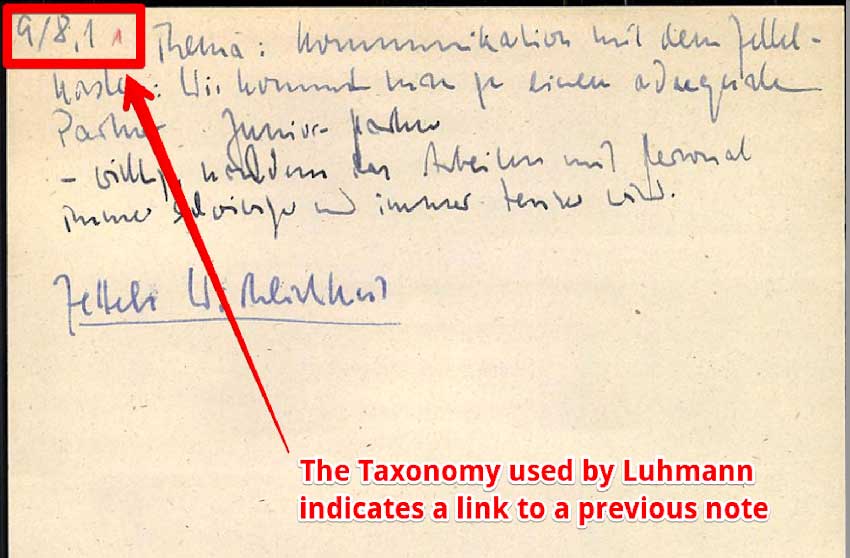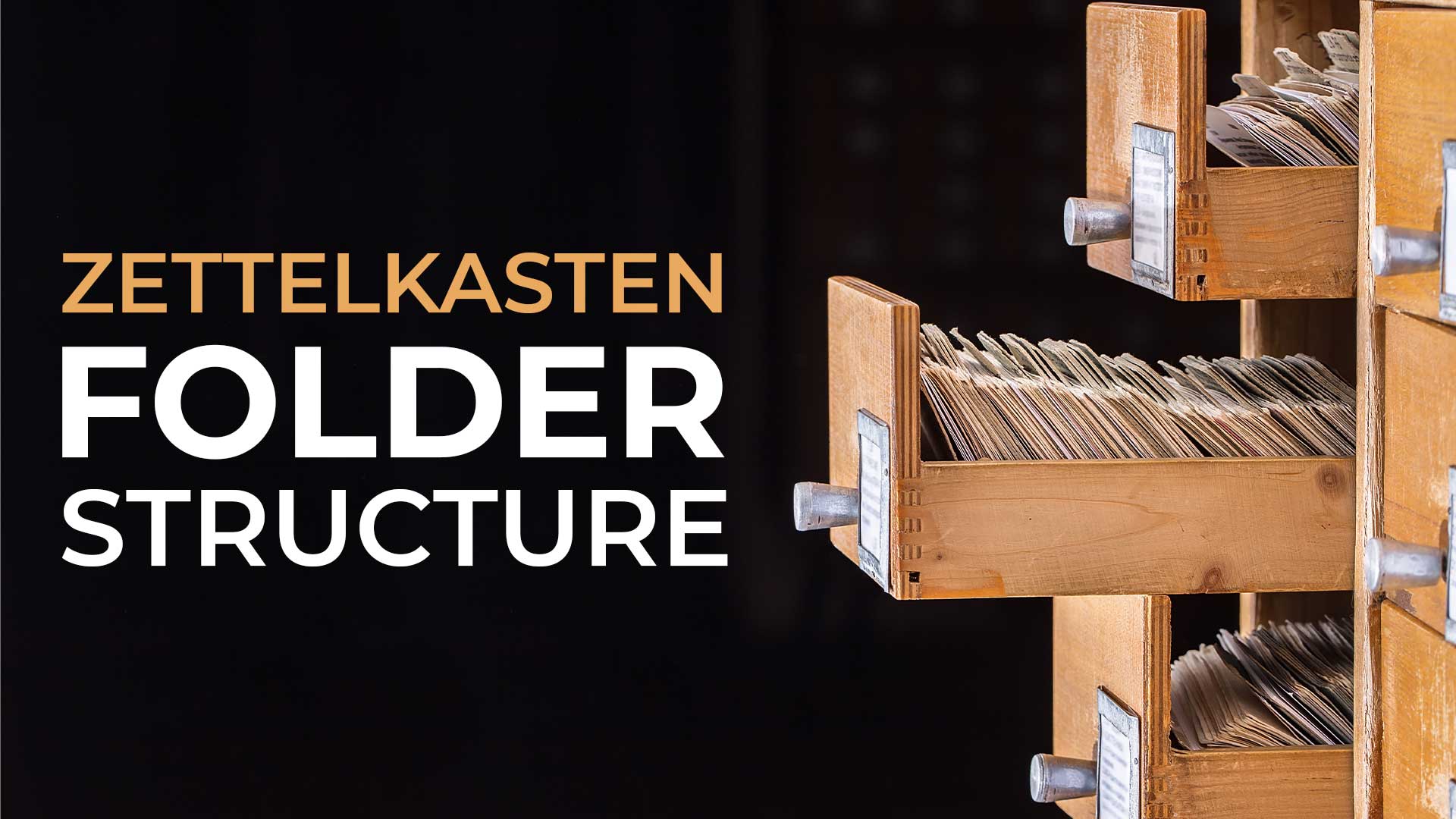In this article, I’m going to show you what folder structure to use in your Zettelkasten, and wether or not it’s a good idea.
The true Purpose of a Zettelkasten
The purpose of a Zettelkasten is simple: Linking notes together so that creative insights can emerge.
The whole linking methodology is here to promote collisions between ideas.
Once we agree on this premise, we can continue digging deeper into how to achieve this specific goal with the Zettelkasten, and if yes or no folder help us achieve that.
Folders for different types of notes
Among online forums and YouTube videos, many Zettelkasten enthusiasts have started becoming very creative about a specific folder structure within their Zettelkasten.
Folders by note-type
If you take a look at Zettelkasten enthousiasts, you’re going to see that a lot of them mention a different note-types:
- fleeting notes
- permanent notes
- book (or litterature) notes
- Evergreen notes
- thematical notes
- structure notes
- etc.
Folders by source type
Some people use folders to categorize the source of information. Example: Book, Podcast, Article, Video.
Folders depending on the status
Some others use folders depending on the status of the notes. Is the note still at an early stage, or does it need to be refined?
While this can make sense for some, for the most, it’s just a distraction and waste of time. The goal of your Zettelkasten is to help your creative thinking, not becoming an archivist about how and where to store your notes.
In fact, proceeding like this reduces the likelihood of finding creative insights.
Here’s what Sonke Ahrens says in his book “How to take smart notes:“
“Most people try to reduce complexity by separating what they have into smaller stacks, piles, or separate folders. They sort their notes by topics and sub-topics, making it look less complex, but it quickly becomes very complicated. Plus, it reduces the likelihood of building and finding surprising connections between the notes themselves, which means a trade-off between their usability and usefulness.”
Did Nicklas Luhmann have a folder structure in his Zettelkasten?
Nicklas Luhmann, who is the one who has been known for prolifically using the Zettelkasten, did not use folders.
All index cards were kept in physical boxes.
The limits of physical space forced Luhmann to put his notes into some boxes (which we could refer to as “folders” today.)
But as you see below, there was no description for each specific box. In fact, he used a specific taxonomy and sorted his notes based on context.

The main way how Luhmann structured his Zettelkasten was by using links and tags as so:

Are Folders compatible with the Zettelkasten methodology of taking notes?
If you think about it, folders help you separate your notes. It prevents notes from getting mixed up. But when you think about it this is the exact opposite of what Luhmann tried to achieve.
If you start recategorizing and using folders within your Zettelkasten, then you’re missing out on the whole purpose of this powerful creative note-taking system.
If you really think about it, the Zettelkasten note-taking system stands on one strong principle:
Serendipity. Serendipi..what?
It’s a fancy word for promoting collisions between ideas.
Using folders also goes around the principle of letting the structure emerge.
Here’s what Sonke Ahrens says:
“That the slip-box is not sorted by topics is the precondition for actively building connections between notes.”
If you start recategorizing and using folders within your Zettelkasten, then you’re missing out on the whole purpose of this powerful creative note-taking system.
Folders can still be relevant for some use cases.
But for now, let’s go back to the basic of using a Zettelkasten for what it was meant for… HAVING IDEAS!
To learn more, here’s a free 7-day email course that will show you how:

